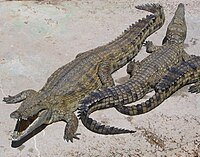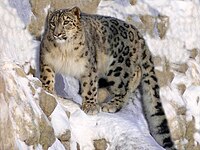
Naïve, bold, or just hungry? An invasive exotic prey species recognises but does not respond to its predators
Sign Up to like & getrecommendations! Published in 2018 at "Biological Invasions"
DOI: 10.1007/s10530-018-1782-4
Abstract: Alien species experience both costs and benefits in invaded environments, through naiveté of potential prey species, but also predation pressure from native predators. The question of whether alien prey recognise and respond to native predators… read more here.
Keywords: prey species; respond predators; invaded environments; exotic prey ... See more keywords

Pushing the switch: functional responses and prey switching by invasive lionfish may mediate their ecological impact
Sign Up to like & getrecommendations! Published in 2021 at "Biological Invasions"
DOI: 10.1007/s10530-021-02487-7
Abstract: Biodiversity is declining on a global scale and the spread of invasive alien species (IAS) is a major driver, particularly through predatory impacts. Thus, effective means of assessing and predicting the consequences of IAS predation… read more here.
Keywords: prey; functional response; responses prey; prey switching ... See more keywords

Predator avoidance behavior of nocturnal and diurnal rodents
Sign Up to like & getrecommendations! Published in 2020 at "Behavioural Processes"
DOI: 10.1016/j.beproc.2020.104214
Abstract: Animals trade-off predation risk against feeding opportunities and prey species may use signals or cues of predators to assess predation risk. We analyzed the mesopredators pine and stone marten (Martes martes, M. foina) and nocturnal… read more here.
Keywords: prey species; avoidance behavior; nocturnal diurnal; food ... See more keywords

Trophic behavior of specialist predators from a macroecological approach: The case of the magellanic woodpecker in south American temperate forests
Sign Up to like & getrecommendations! Published in 2020 at "Global Ecology and Conservation"
DOI: 10.1016/j.gecco.2020.e01285
Abstract: Abstract Theoretical and empirical studies have addressed predator-prey relationships, but the relevance of individual prey species, prey species richness and environment on the niche and the distribution of specialist predators have been scarcely tested with… read more here.
Keywords: specialist; distribution; niche; species richness ... See more keywords

An invasive amphibian drives antipredator responses in two prey at different trophic positions
Sign Up to like & getrecommendations! Published in 2020 at "Behavioral Ecology"
DOI: 10.1093/beheco/araa036
Abstract: Generalist invasive predators consume prey at different trophic levels and generate drastic changes in local communities. However, the long-term effects of predation may be reduced by eco-evolutionary responses of native populations. The capacity of prey… read more here.
Keywords: invasive amphibian; antipredator responses; prey species; different trophic ... See more keywords

Resistance is futile: lack of predator switching and a preference for native prey predict the success of an invasive prey species
Sign Up to like & getrecommendations! Published in 2018 at "Royal Society Open Science"
DOI: 10.1098/rsos.180339
Abstract: Invasive species continue to severely impact biodiversity, yet predicting the success or failure of introduced species has remained elusive. In particular, the relationship between community invasibility and native species diversity remains obscure. Here, we apply… read more here.
Keywords: prey; prey species; invasive species; native prey ... See more keywords

Predator discrimination of prey promotes the predator-mediated coexistence of prey species
Sign Up to like & getrecommendations! Published in 2022 at "Royal Society Open Science"
DOI: 10.1098/rsos.220859
Abstract: The predator discrimination of prey can affect predation intensity and the prey density dependence of predators, which has the potential to alter the coexistence of prey species. We used a predator–prey population dynamics model accounting… read more here.
Keywords: predator discrimination; prey species; predator; prey ... See more keywords

Top–down limits on prey populations may be more severe in larger prey species, despite having fewer predators
Sign Up to like & getrecommendations! Published in 2019 at "Ecography"
DOI: 10.1111/ecog.03791
Abstract: Variation in the vulnerability of herbivore prey to predation is linked to body size, yet whether this relationship is size‐nested or size‐partitioned remains debated. If size‐partitioned, predators would be focused on prey within their preferred… read more here.
Keywords: prey populations; body size; predator; prey species ... See more keywords

Assessing the spatiotemporal interactions of mesopredators in Sumatra’s tropical rainforest
Sign Up to like & getrecommendations! Published in 2018 at "PLoS ONE"
DOI: 10.1371/journal.pone.0202876
Abstract: Co-occurrence between mesopredators can be achieved by differentiation of prey, temporal activity, and spatial habitat use. The study of mesopredator interactions is a growing area of research in tropical forests and shedding new light on… read more here.
Keywords: clouded leopard; assessing spatiotemporal; prey species; study ... See more keywords

Landscape use and co-occurrence pattern of snow leopard (Panthera uncia) and its prey species in the fragile ecosystem of Spiti Valley, Himachal Pradesh
Sign Up to like & getrecommendations! Published in 2022 at "PLoS ONE"
DOI: 10.1371/journal.pone.0271556
Abstract: The snow leopard (Panthera uncia) plays a vital role in maintaining the integrity of the high mountain ecosystem by regulating prey populations and maintaining plant community structure. Therefore, it is necessary to understand the role… read more here.
Keywords: snow leopard; panthera uncia; prey species; leopard panthera ... See more keywords

Prey species of franciscana Pontoporia blainvillei as paratenic hosts of helminths.
Sign Up to like & getrecommendations! Published in 2017 at "Diseases of aquatic organisms"
DOI: 10.3354/dao03101
Abstract: The distribution of franciscana Pontoporia blainvillei Gervais & d'Orbigny, 1884, is restricted to the estuarine and coastal waters of the southwestern Atlantic. The diet of this dolphin is composed of fishes, squids, and shrimps, many… read more here.
Keywords: pontoporia blainvillei; paratenic hosts; prey species; franciscana pontoporia ... See more keywords